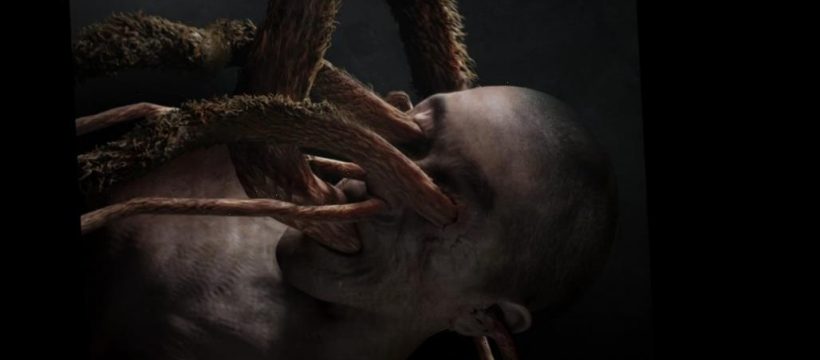SPOILER ALERT: Do not read if you have not yet watched the sixth episode “Lovecraft Country,” titled “Meet Me in Daegu.”
When bringing to life a nine-tailed fox from Korean and Chinese folktales, HBO’s “Lovecraft Country” creator Misha Green envisioned a grotesque reiteration of the otherwise beautiful creature.
The result is Ji-Ah, portrayed by Jamie Chung, a charming Korean woman hiding her nine tails that come out of her orifices. Like the fox from the Korean legend, the nurse, who serves in the Korean War, lures men into her bed, only to devour their organs.
Behind the actor’s transformation from an everyday woman to a nine-tailed fox — known as a “kumiho” — are concept artist Deak Ferrand and VFX supervisor François Dumoulin. Since signing on to design the series last May, the duo collaborated with Green on creating a kumiho that illustrates its cultural origin and pushes the limit of violence displayed on the show.
After designing the vampire and zombie-inspired creatures in previous episodes, Ferrand moved on to researching the nine-tailed fox and found a wealth of inspiration from Green’s vision on creating a kumiho whose “tentacles” originate from her nine orifices. Ferrand’s vision — which meant creating overtly violent, visual and hairy monster tails — was well-received by Green.
“We had our first meeting, and I just had to fine-tune Misha’s ideas of having wet hair and hiding the private parts of the girl,” Ferrand tells Variety. “I did some close-up concepts of her face and the guy’s face and even the extremity of the tentacles to illustrate how they operate. And, obviously, all the tentacles are matching in the position or where it goes.”
During pre-production, the concept artist not only designed the main character of the episode but also created its setting, Daegu, South Korea, on Photoshop. He rendered sketches of traditional buildings and backdrops of military bases during the Korean War to relocate the L.A.-based actors to 1950s Korea.
Dumoulin took Ferrand’s concept art to post-production, giving life to the nine tails on paper. The first step was to choreograph the order in which Ji-Ah’s tentacles crawl out of her body.
“We start with the largest ones, the most powerful ones, so they can possess the guy,” Dumoulin explains. “Once he’s trapped and she’s lifting him up in the air, the tentacles from her face make their way to his face. And the one connected to her eyes is going to allow us to read inside [his] brain. She’s literally connecting with her subject, progressively sucking life energy out of him.”
For the scene of Ji-Ah’s partner exploding on top of her, Green suggested using minimal CGI, relying on wire stunts to hold the actor in mid-air. Blood spewing from her partner was added in via computer graphics while the visual effects team worked closely with the show’s prosthetic make-up artists who provided bags of “blood” for scenes showing Ji-Ah wiping it off the floor.
With each episode taking 10 to 12 weeks of post-production, Dumoulin and his team started editing “Lovecraft Country” at the beginning of coronavirus-forced lockdowns. But the biggest challenge hasn’t been communication over video calls: it was having designers on the team who could not edit the show’s violent and sexual depictions in front of their children.
Despite creating a show during the pandemic, “Lovecraft Country” has provided both artists an opportunity to engage in creative, challenging work from home. Dumoulin adds that collaborating with Green, a newcomer to visual effects, has also been an enriching experience.
“VFX designers, we really enjoy being given the freedom to express an idea, and I think this particular kumiho sequence was really a case, where we were given a pitch from Misha,” he says. “We were given very specific bits of action and indication of how this would build-up, and it’s a gift to have that creative freedom in interpreting and creating that.”
“Lovecraft Country” airs Sundays at 9 p.m. on HBO.
Source: Read Full Article
